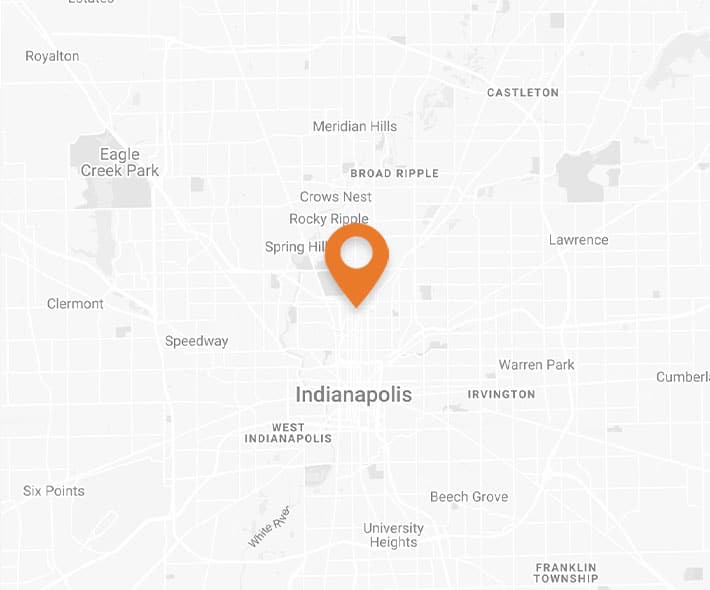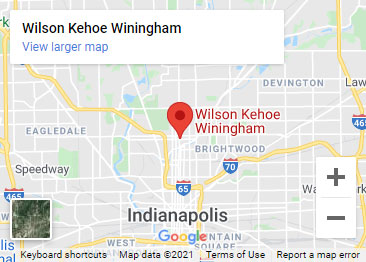What to Do After a T-Bone Accident
Updated November 6, 2023 | By Wilson Kehoe Winingham staff
Whether at a busy intersection or on a one-way road, t-bone collisions can happen suddenly and result in serious injury and even death. These accidents are scary and damaging, both in the moment and long-term. If you’ve been involved in a t-bone accident, you may be eligible for compensation.
What Is a T-Bone Accident?
A t-bone accident is a car collision where the front of one vehicle collides with the side of another. Also called a broadside collision, this type of accident is often referred to as a t-bone accident because the shape at the point of impact looks like the letter “T.” It is one of the more common types of car accidents and can lead to severe injury, property damage, and fatalities.
T-Bone Accident Injuries
T-bone accidents can be extremely dangerous because of the placement of force. Since the accident involves the side of the car, there is less protection for the person in the car on the “top” of the T-shape.
Instead of jerking forward and back as in rear-end collisions or other types of accidents (which is still dangerous and harmful), the sideways force moves the driver and passengers laterally. The side collision means there is an increased chance of having forceful contact with the window, door, or any structural elements in the car.
Injury can occur to anyone in the car, yet can be most severe for the person closest to the point of impact. Common injuries that occur because of the side impact of a t-bone car accident include:
- Whiplash
- Paralysis
- Spine and neck injuries
- Concussion or other head injuries
- Broken bones
- Lacerations
Injuries endured from a t-bone accident can be severe. We recommend visiting a doctor after an accident even if you don’t notice injuries. Making sure you’re safe and healthy is most important. If you do happen to have a delayed injury, your personal injury lawyer may be able to help you get compensation.
Causes of T-Bone Accidents
A t-bone collision usually happens when a driver fails to yield for another driver who has the right-of-way. Left turn t-bone accidents are the most common, whether at a traffic light or 4-way stop sign. Broadside collisions can also occur in parking lots or even on the highway if a car spins out of control. Simply not following the rules of the road can also lead to t-bone accidents, like blowing through a red light or speeding through a yellow left turn.
Yes, these are the common types of collisions involving t-bone crashes, but why do t-bone crashes happen in the first place?
Causes of t-bone accidents may include:
- Distracted Driving: many t-bone accidents could be avoided if the driver at fault was paying attention. T-bone accidents happen because a driver did not give another vehicle the right-of-way because they were distracted by texting, looking down at the radio, reaching for something, eating, or a multitude of other actions. Anytime a person behind the wheel is not paying attention to the road, that person is a distracted driver.
- Drowsy Driving: drowsy driving can lead to a lack of awareness on the road. Driving while fatigued slows reaction time, increasing the odds for a car accident.
- Driving Under The Influence of Drugs or Alcohol: It is both illegal and reckless to drive while drunk or under the influence of alcohol.
- Manufacturing Problems: collisions can occur if a vehicle is faulty.
What to Do If You’ve Been in a T-Bone Accident
Getting in a t-bone collision can be scary and feel overwhelming. If you have been involved, there are some steps to take after the accident:
- Find a safe place close to the accident and out of the way of other vehicles
- Check for injuries. If you or your passenger has been badly injured, go to a hospital immediately
- Collect insurance information from the other party involved. Make sure not to admit fault
- Take photos and videos that can be used as evidence. The more evidence you have for the accident, the better it is to present your case
- File a police report. This may also help you in your insurance claim. Police reports cannot be used as admissible evidence, yet they provide support for your attorney
- Contact your insurance company. Doing so with your attorney is advantageous since they have experience in t-bone insurance claims
Who’s at Fault in a T-Bone Collision
The driver at fault in a t-bone accident is the person who was acting negligently on the road by not following traffic signs or driving illegally. The driver who made the left turn is usually who is at fault in a t-bone crash. Since it is not always the case that the left-turning driver drove with negligence, the fault will lie with the driver who was distracted or incautious.
I Hit a Car That Ran a Stop Sign; What Do I Do?
If your t-bone accident happened at an intersection with a stop sign, you have a better chance of other drivers and pedestrians being present who may have witnessed what happened. If this is not the case, you’ll want to be sure to collect as much evidence from the scene of the crash as you can to make your case.
Having a car accident attorney will be helpful during the process of presenting evidence for insurance purposes. There may be disagreements about who had the right-of-way, so writing a personal statement right away is important. Your lawyer can also help in proving the other driver was at fault with key evidence.
Other Liable Parties
In some t-bone accident cases, the collision may be the result of a driver not even involved in the crash. A driver may have acted negligently which caused another driver to swerve and ultimately t-bone another vehicle. The original driver who started the ripple effect is responsible.
If there was a faulty function that contributed to the t-bone accident, then the product manufacturers could be held liable.
Multiple Negligent Parties
T-bone collisions can result in or be the result of a multi-car collision. If this is the case, it is much more complicated to determine fault. A thorough investigation is needed to find out who is liable in the accident(s). Discovering fault is crucial to your case and compensation. Multi-car accident attorneys are useful in this process to analyze evidence. For intersection accidents, it’s typical to see more cars involved in a pileup if the intersection is busy.
T-bone Accidents Involving Trucks
The National Highway Traffic Safety Administration found that 72% of fatalities involving large-truck accidents were occupants of other vehicles. In 2017, 10% of truck accidents had point of impacts on the left side of a car, with 6% on the right side.
Truck accidents are dangerous because of the mere size and weight of a truck. Since semis are so high off the ground, the car may slide under the front of the truck. If a car broadsides a truck, there is the possibility that the car undersides the semi. In
Determining Fault in Truck T-Bone Collisions
For determining liability in truck accidents, the at-fault party will be held responsible, but it is also possible for liability to fall on:
- The trucking company
- The individual responsible for the truck’s upkeep if the truck t-bone accident occurred because of faulty maintenance
- The manufacturer if a part in the truck that caused the accident is defective
- A government agency if a blind corner does not have proper road signs
At-Fault States
Indiana conducts its insurance in a comparative fault model, also known as tort liability or at-fault system. Insurance companies pay damages based on the amount of fault for which each party is responsible. You may get damage compensation if your liability in the accident is 50% or less. However, the court reduces compensation depending on your amount of fault. If you are found liable for 30% of the t-bone collision, you will receive 70% compensation, rather than full (100%) compensation.
Since multiple parties may be found at fault in t-bone accidents, your compensation will depend on the fault of each driver. It is crucial to collect as much evidence as you can to prove a minimum amount of fault so you get a higher compensation.
Claiming Insurance
To file an insurance claim and lawsuit following a t-bone accident, first file a claim with your insurance agent. They will examine evidence and determine fault. The process is much more complicated in the nuances of collecting evidence.
You may also want to pursue a settlement where both parties agree to reach a settlement to resolve a legal dispute. If a party does not want to settle, a lawsuit may go to trial.
Role of a T-Bone Attorney
Hiring an attorney experienced in T-bone accidents will benefit you in significant ways. Side impacts account for 23% of car accident fatalities, making them common accidents that seasoned attorneys are experienced handling. Car accident attorneys can help you in a number of ways:
- Assist in collecting evidence for an insurance claim
- Help you in a car accident settlement
- Represent you in a court of law for a personal injury case
- Navigate aggressive and unreasonable tactics from insurance companies
How Do T-Bone Accident Lawyers Get Paid?
Car accident lawyers generally don’t get paid unless you win your case! If the court rules against you, you will not owe legal fees.
Statute of Limitations
The Indiana statute of limitations is two years from the date of the accident. That being the case, negotiating a settlement should be done as soon as possible.
Call an Experienced Indianapolis Attorney
If you or a loved one has been involved in a t-bone accident, contact the experienced car accident lawyers in Indianapolis at Wilson Kehoe Winingham. We are here to help you get the compensation you deserve. Broadside collisions can be harmful to your property and wellbeing. We are here to help every step of the way. Contact us for a free case evaluation today.
Contact Us
Let WKW put our experience to work for you. Contact us for your free case evaluation.
Or, call us today at (317) 920-6400


